Engulfed in sweaty crowds in mid-summer Florence more than 30 years ago, one has never gone back, but has always felt cheated.
So, since there's no winter in Switzerland anymore anyway, we'll try a February visit.
The Arno in mid-Pisa, an hour's train ride downstream from Florence. We're watching out for leaning towers, so far unsuccessfully. 6 February 2011.
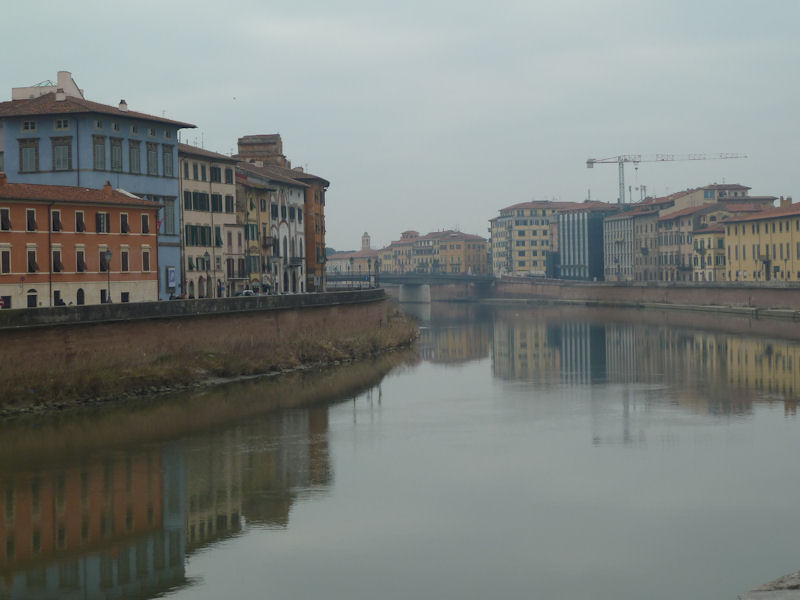
It's a grey February day, perfect for viewing cathedrals, baptistries, towers off-centre, etc.

To every city, it's Garibaldi statue

We're lost already.

This is the Burgo Stretto main thoroughfare northward through town. Towers said to be ahead somewhere.

Pisa was a functioning Etruscan coastal city in the 7th century BC and, after the coastline moved a few miles downriver, an important Roman naval base through to the end of the Empire. Long afterward, it became a powerful maritime republic competing with Genoa and Venice for trade throughout the region -- briefly lords of Sardinia, Corsica, the Balearic Islands, and parts of Tunisia in the 11th century.

The city hit its peak of prosperity in the 12th and early 13th centuries, and much of the Good Stuff dates from that epoch. Caught up in the Empire/Papacy squabbles, however, the steadfastly Ghibelline city lost its fleet and network of trading stations to the Genoese and, in 1406, its independence to the Florentines.
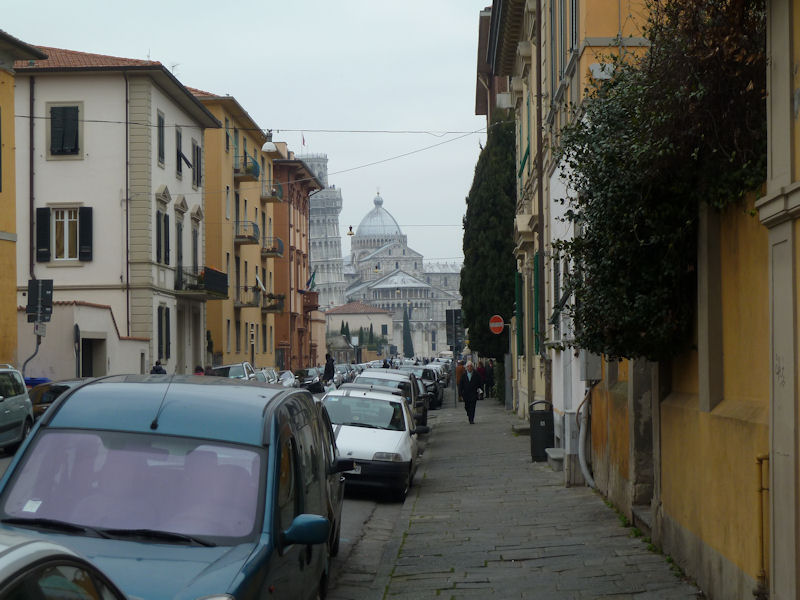
We've reached the northern city wall and turned left along the Via Carducci, and we're getting close to the Good Stuff.

The Very Leaning Tower and the Duomo ahead, in the Piazza del Miracoli or Miracles Square, a spacious, green city park filled with enormous religious amusements.

After uncountable engineering works to stabilize the tower (beginning in 1178), it was pronounced safe and reopened to the public in 2001, and these intrepid folks on top of it believe every word they're told about tourist destinations.

The Duomo, Santa Maria Assunta, was begun in 1064 supposedly on the spoils of the Pisan military victory over Palermo, Sicily (though in fact there was no military victory over Palermo).
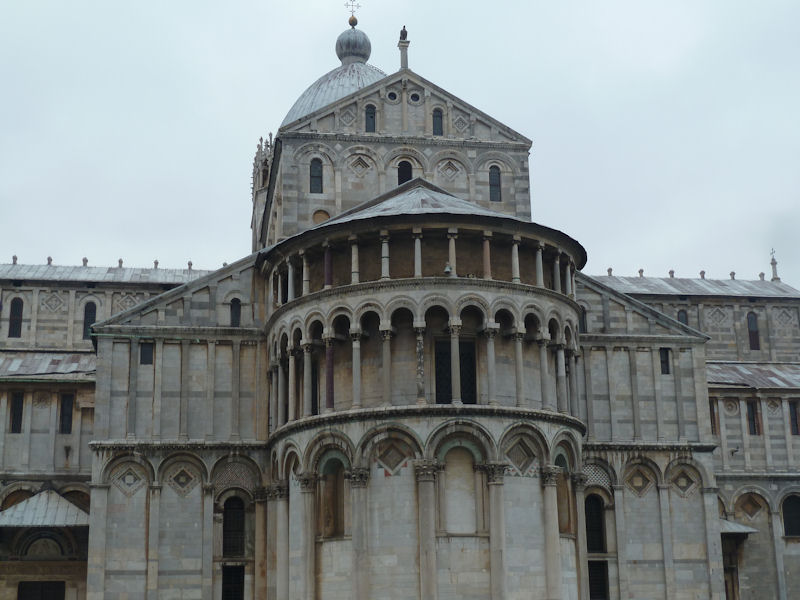
A lovely building in what's called a "distinctive Pisan Romanesque style"
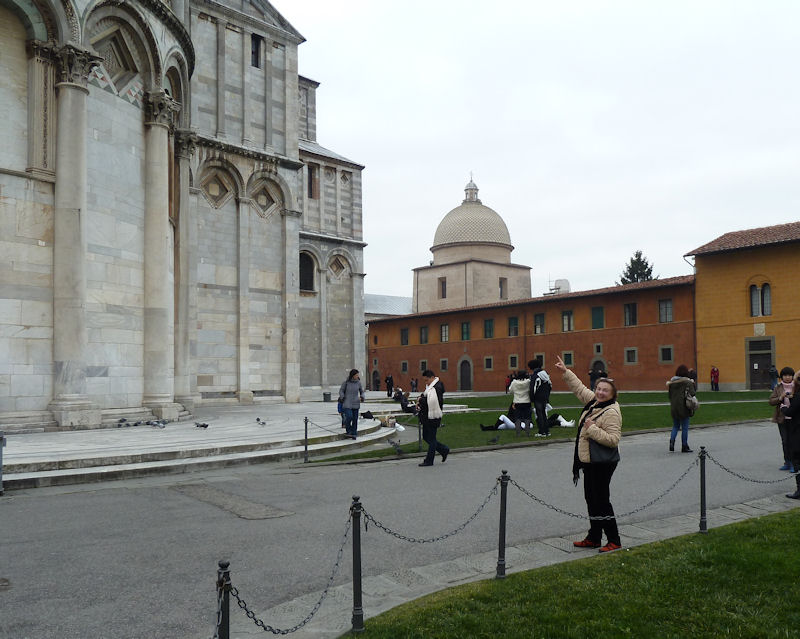
Amusing gargoyles

We're on our way to pay the entrance fees and jog up the steps of the leaning tower for a good view of what's on offer.

But, guess what, it's €15 to get yourself up the leaning tower under your own power, so instead we're starting out in the ancient cemetery of the Camposanto.
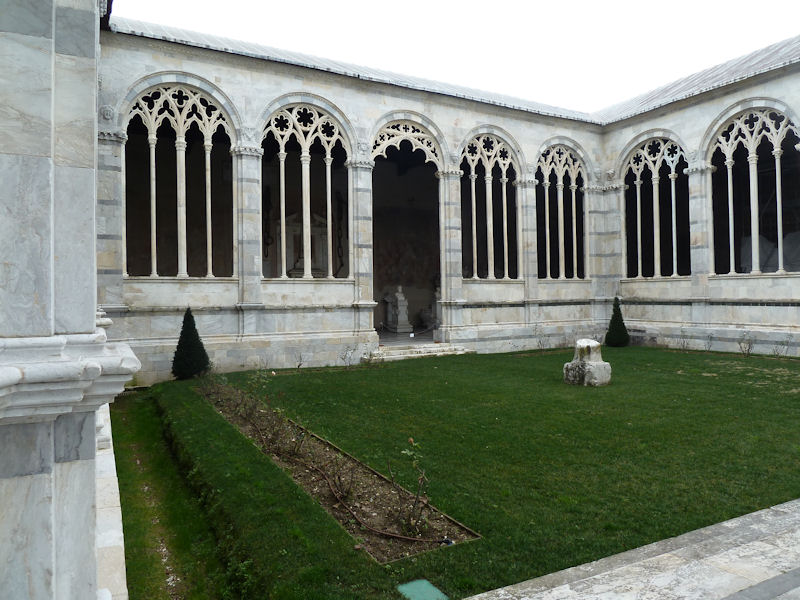
The Gothic cloister building was begun in 1277 or so to surround a big shipment of the original holy dirt from Golgotha, yeah, scooped up during the Fourth Crusade. It was completed in 1464 and bombed to smithereens by the Americans in 1944.

The restoration work since 1945 has been epic and enormously successful, but the fabulous frescoes were largely destroyed, the remarkable sarcophagi were crushed, and the whole roof came down with a bang.

Even the survivals are impressive enough, though fragmented and faded.

Late 14th and 15th century frescoes by Benozzo Gozzoli and other luminaries -- what's left after they dropped incendiary bombs on the cloisters, for some reason, consists of faded frescoes, including a whole roomful of Buffalmacco's extravaganzas; the sinope pre-drawings laid down for the artists, now displayed across the grounds in the Spedale Nuovo di Santo Spirito or Museo delle Sinopie (the red earth used for the drawings came from Sinope in Turkey); and . . . very luckily . . . a complete series of water-colored engravings published by the curator and his son in 1812, long before the heroic warriors got at them.

Many of the sarcophagi have been glued back up and are extremely astounding, if you like that sort of thing, as who would not.

Like these

The sacred soil of Golgotha
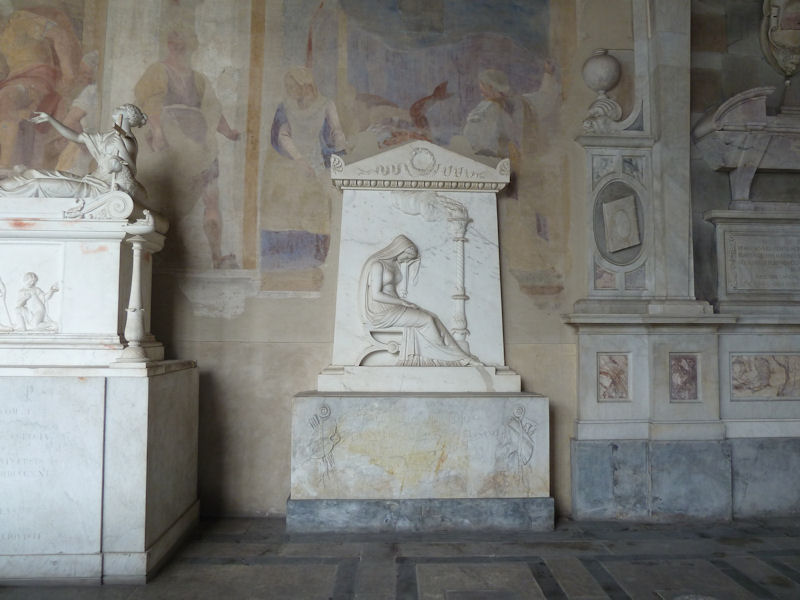
Very sad

Warplanners evidently felt that Pisa had somehow got in their way. What a clean-up job.

One of big cycles by Buffalmacco (Buonamico di Martino), Last Judgment and Hell (ca. 1338) -- happily, published in a 19th century engraving before we got it into this state. Buffalmacco was a famous practical joker, and many of his escapades are recounted by his friend Boccaccio in his Decameron and by Vasari in his Lives of the Artists. Ha ha, demons eating sinners' intestines, very humorous.

Here's the one just above, with the intestines, etc., very grim but also funny. From an exhibit of the 19th century engravings in the museum.

And here's part of the one higher up, all kinds of horrible things going on, but Jesus unruffled.
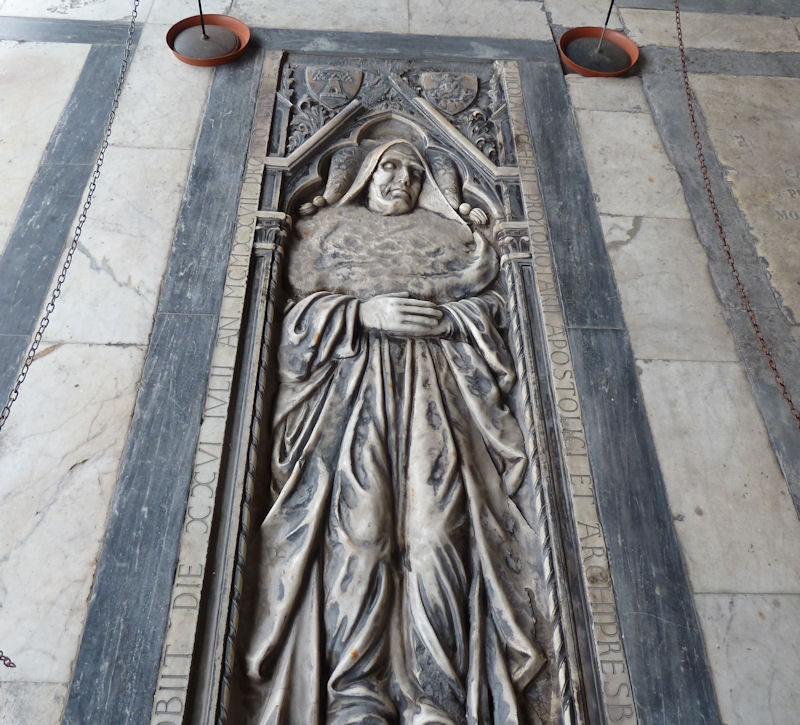
Nothing a wooden stake in the heart wouldn't fix.

The sort of book you just can't put down

Beautiful symmetries, and sacred soil into the bargain

The front of the Duomo, from the Baptistry side

The famous bronze doors, created by Giambologna and friends in about 1602 after a nasty fire took out the old ones
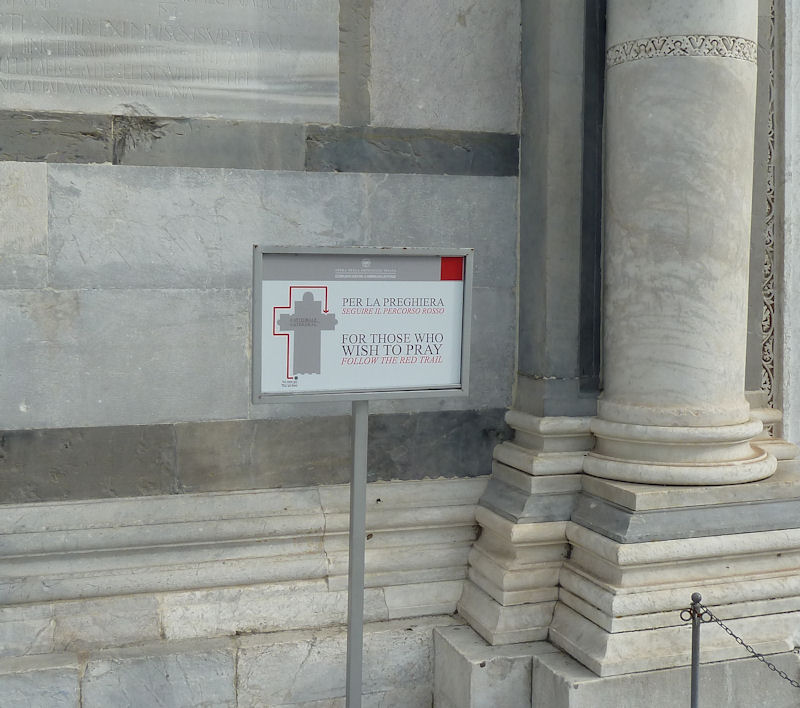
"For those who wish to pray -- follow the red trail": always good advice. (The back door of the Hagia Sophia in Istanbul has a sign that says "This Part is Just for Pray to Muslim".)

Inside the Duomo -- Byzantine-style mosaics all over the place.
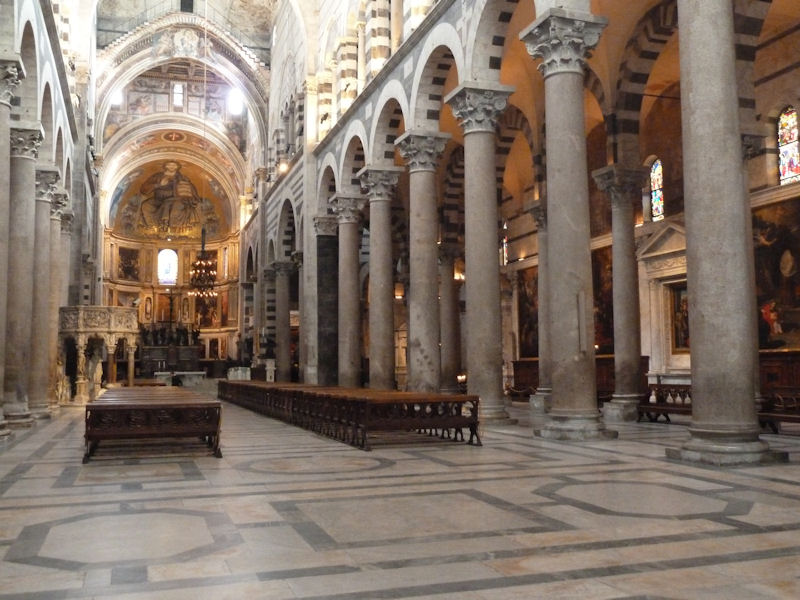
The bones of St Ranieri are here somewhere -- very special for Pisans.
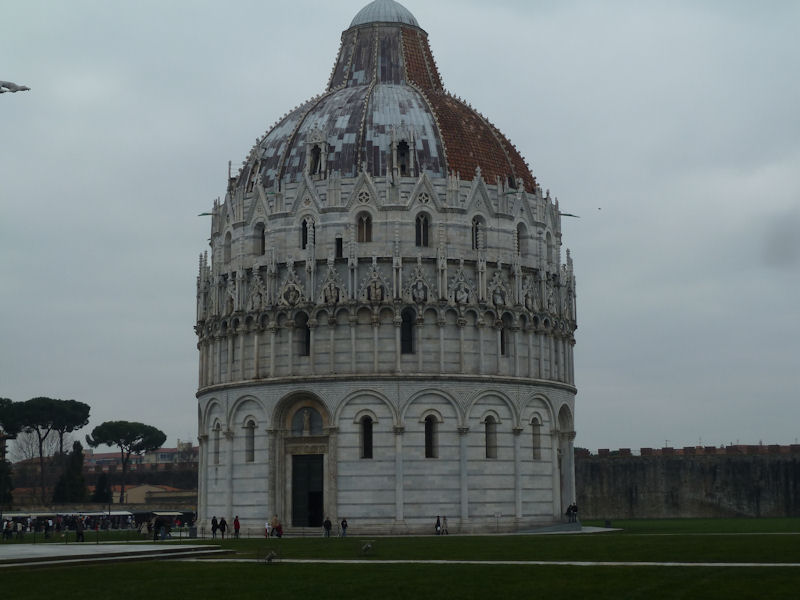
This is the Baptistry within the walled grounds, fantastic, ornate, begun in 1153 and completed in 1400. Problems with the union?? We're told that the rising tiers show increasingly modern styles as the half-centuries wore on.

The beautiful inside of it, and the pulpit, from 1260, was carved by Nicola Pisano

Up we go, between the walls

Looking down on the baptismal font and pulpit
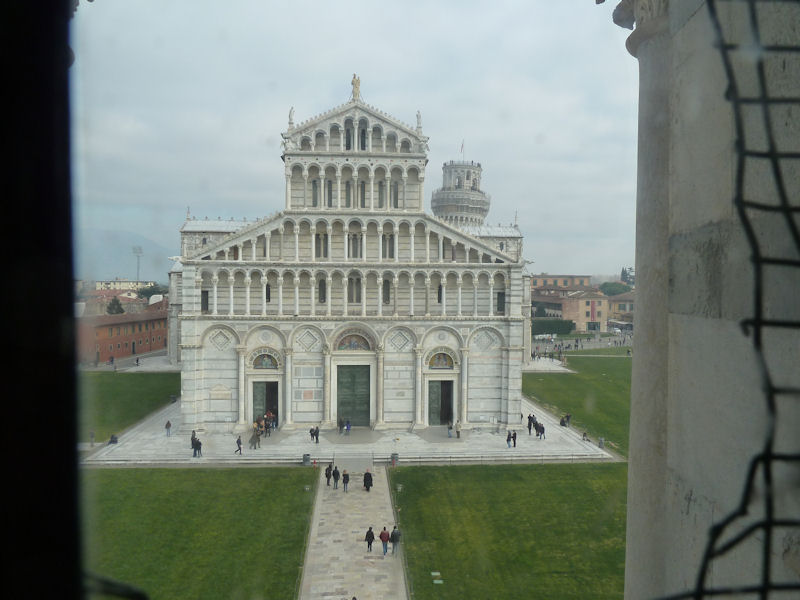
The cathedral from the Baptistry
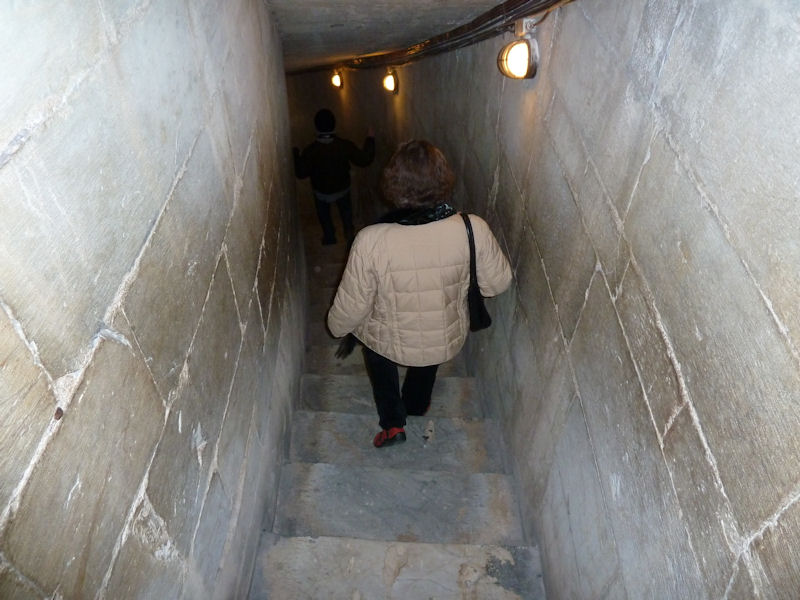
Back down the walls

We're on our way to the Spedale Nuovo di Santo Spirito ("New Hospital of the Holy Spirit"), built in 1257, now the Museum of Sinopias, with the original wall drawings of the Camposanto frescoes.
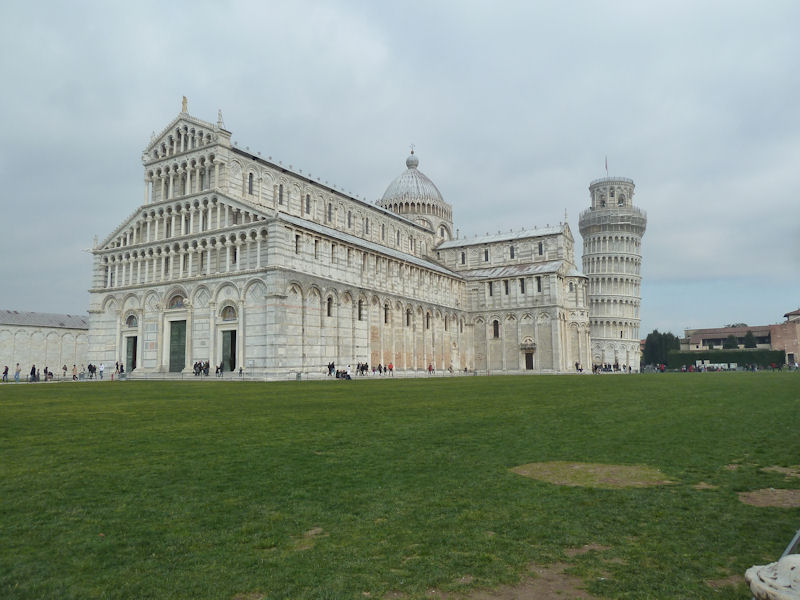
The cathedral and tower

(That thing's not going to be there much longer.)

At the end of the holy precincts, there is the museum of the Opera del Duomo, the organization that has been overseeing the building and maintenance of the place since yonks.

Kristin and the Griffin (for her friends the Griffins)

The tower from the Museo dell'Opera

The Baptistry and Duomo
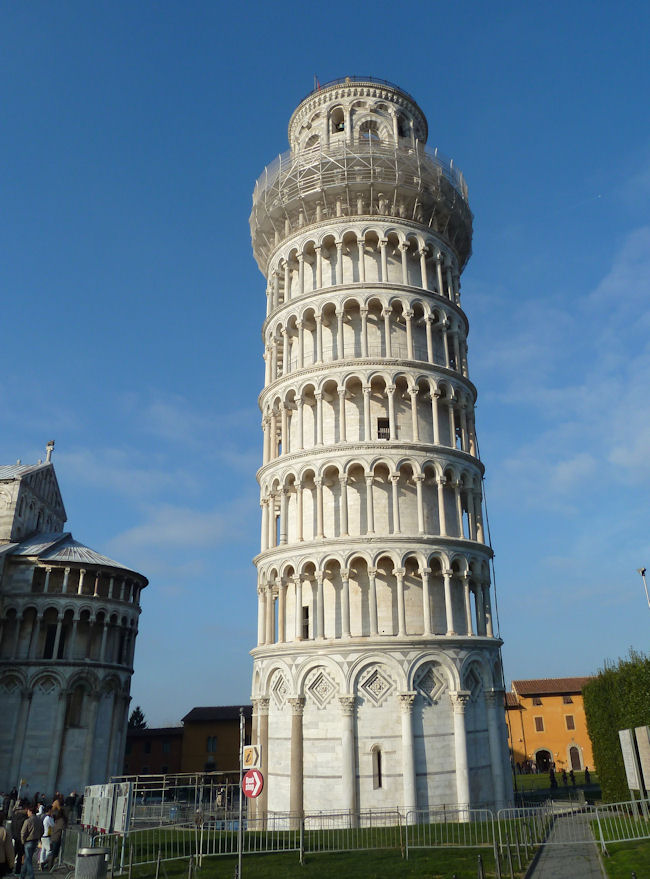
Leaning Tower from the non-leaning angle

The door for the people (if any) who want to pray
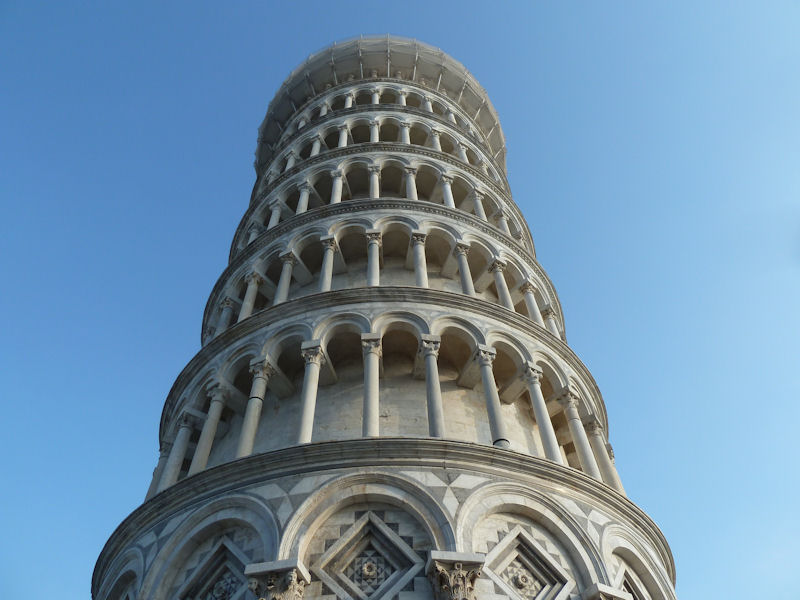
Tower from below

Tower close-up from below

Time to go, with a last look back before it tumbles over

More demonstrations, everywhere we go. This one is not against Berlusconi, however, nor against the fascist state -- they're just calling for universal peace.
 Dwight Peck's personal website
Dwight Peck's personal website





















































